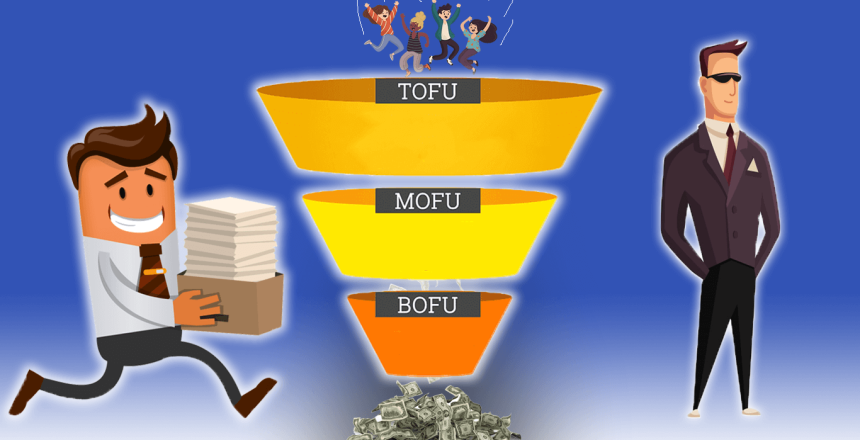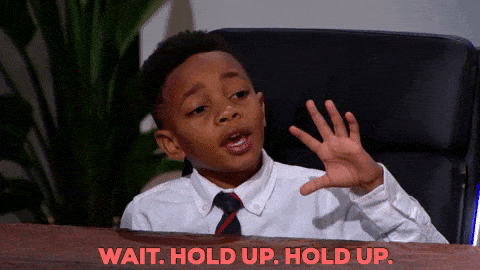A simple answer is because they expect results overnight, without a strategy, without anything.
If they could start today and tomorrow to make 6 figures, 7 figures.
You can easily reach these results, but with a clear strategy.
Now back to a simple ecommerce funnel that will help you!
You’ve probably heard the term “FUNNEL” or the abbreviations “TOFU” “MOFU” “BOFU” but you don’t know what it means.
Let’s take someone as an example who doesn’t know your store, sees your ad. They click on the ad, go to your store, maybe even add a product or two to their cart. If you’ve done things well, they buy your product.
Sometimes people get distracted and forget to buy the product, in which case they just need a reminder to buy it. Or sometimes they need a little push. What we’ve described is a funnel. You could also think of this as a customer acquisition journey.
Basically, every customer has to go through a series of steps before they buy a product.
There are 5 steps from stranger to buyer (Breakthrough Advertising – Eugene M. Schwartz)
Unaware – no idea of problem or your product.
Problem aware – knows they have a problem that they want solved, but don’t know what is used to solve it.
Solution aware – knows there is a solution, but don’t know a specific product to solve it.
Product aware – knows about your product.
Most aware – someone who just needs a little push to buy your product. In terms of Facebook advertising, we can therefore simplify this to.
Let’s understand TOFU, MOFU, BOFU
- Prospecting (TOFU) – Facebook ads that are shown to people that are either unaware, problem aware, or even solution aware. But they don’t know about your product specifically.
- Engagers (MOFU) – people that have already seen your ad. They’ve possibly even watched your video ad, or clicked the Like button, or commented.
- Retargeting (BOFU) – people that have visited your website. These correspond to product aware and most aware stages. You will make the most profit on this audience
The point is, you should:
- Be at least breakeven ideally or even at a slight loss for prospecting ads.
- But be very profitable for retargeting ads.
- Therefore, overall be profitable.
A little more on the specifics types of audiences of funnels:
❄️ Top of Funnel (TOFU) (Cold Audience) – is targeting a cold audience ie. people who haven’t engaged with the brand/visited the website in the last 30 days. We’re simply trying to drive ‘new’ visitors to the website and/or create a positive first touchpoint with the brand. This is where we use our Lookalike audiences and Interest targeting to find ‘new’ website visitors/customers. These are typically the lowest converting campaigns but the most volume as they feed the rest of funnel as visitors progress further down.
☀️ Middle of Funnel (MOFU) (Warm Audience) – targeting slightly warmer audiences ie. people who may have viewed a video or engaged with page content or an ad but haven’t yet clicked through to the website. Our objective is to now push them to the website to view a product and convert. This is where we use our PPE engagement and page-like audiences while excluding the website visitors (typically last 30 days) to drive these engagers to the website and pixel them to retarget if they don’t convert into a purchase on this attempt.
🔥 Bottom of Funnel (BOFU) (HOT audience) – Retargeting website visitors and leads who didn’t purchase to return and complete the sale. There are varying levels of ‘intent’ based on various actions for eg. someone who has added to the cart is generally more likely to convert to a sale more than someone who just viewed the product and left. So, the further down the funnel/closer to the purchase event – the higher the intent.
✅ In terms of audience quality/intent from lowest to highest:
Homepage visit Only ⏬
Category Page View ⏬
Product Page View (ViewContent) ⏬
Add To Cart ⏬
Initiate Checkout ⏬
Add Payment Info ⏬
Purchase
…and within each of those, you have different levels of intent again that you can create custom audiences to target for eg. someone who viewed 4 product pages is a probably higher value than someone who viewed one product and bounced.
Or someone who has added to cart 3x and not purchased is much more likely to purchase than a visitor that added to cart just once..
✏️ Now, you can create specific ad copy messaging to cater to these people depending on the actions they have taken.
🥊 POST SALE (Customers) – Here we are simply retargeting our customers and trying to extract as much LTV (Life-Time Value) out of each customer we acquire as possible. While also just adding value to their experience to build brand loyalty. Thanking them for the purchase, putting additional relevant products and offers in front of them, asking for UGC, rewarding them for referrals, etc.



